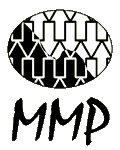Interviewing Process
The questionnaires are applied in three phases. In the first phase, basic social and demographic data are collected from all members of the household. The interview begins by identifying the household head and systematically enumerating the spouse and children, beginning with the oldest. All children of the head are listed on the questionnaire whether or not they live at home, but if a son or daughter is a member of another household, this fact is recorded. A child is considered to be living in a separate household if he or she is married, maintains a separate house or kitchen, and organizes expenses separately. After listing the head, spouse, and children, other household members are identified and their relationship to the head clarified.
A particularly important task in the first phase of the questionnaire is the identification of people with prior migrant experience in either the United States or Mexico. For those individuals with migrant experience the interviewer records the total number of U.S. trips, as well as information about the first and most recent U.S. trips, including the year, duration, destination, U.S. occupation, legal status, and hourly wage. This exercise is then repeated for first and most recent migrations within Mexico.
The second phase of the ethnosurvey questionnaire compiles a year-by-year life history for all household heads, including a childbearing history, a property history, a housing history, a business history, and a labor history. The goal of this phase is to capture occupational mobility, health status, migration history, and family formation.
The third and final phase of the questionnaire gathers information about the household head's experiences on his or her most recent trip to the United States, including the mode of border-crossing, the kind and number of accompanying relatives, the kind and number of relatives already present in the United States, the number of social ties that had been formed with U.S. citizens, English language ability, job characteristics, and use of U.S. social services.
|



